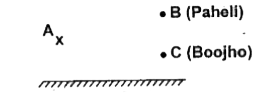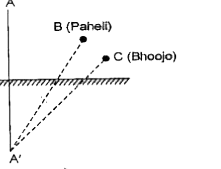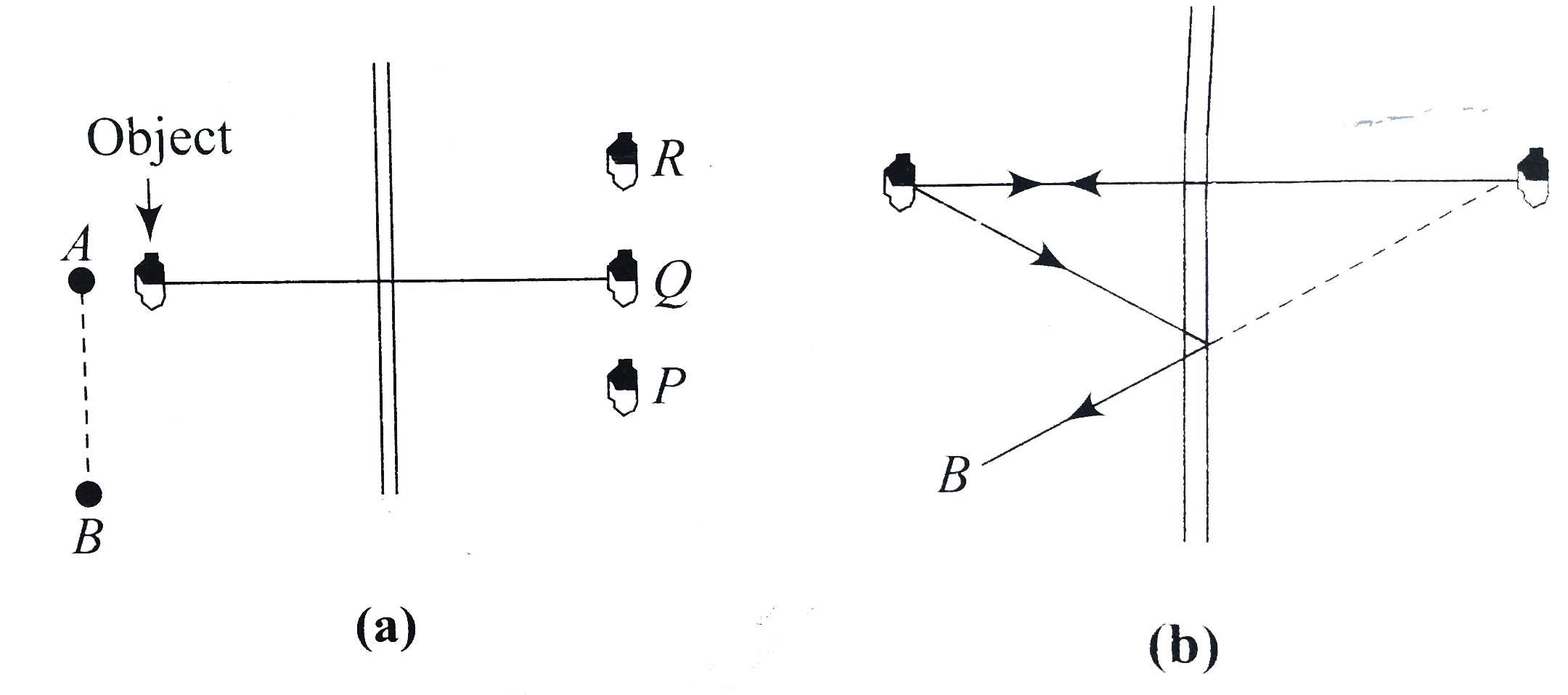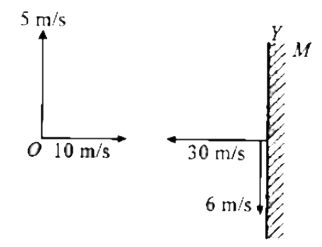(a) Find out the position of the image of an object situated at A in the plane mirror (Fig.16.9).
(b) Can Paheli at B see this image ?
(c) Can Boojho at C see this image ?
(d) When Paheli moves from B to C, where does the image of A move?

(a) The position of the image in the mirror is A. as shown in Fig. 16.10. It is as much behind the mirror as the object is in front of it.

(b) Yes, Paheli at B can see this image.
(c) Boojho at C can also this image.
(d) There will be no change in the position of image of A.
Similar Questions
Knowledge Check
- Question 1 - Select One
When an object is moved away from a convex mirror, the image
Abecomes smallerBmoves closer to the focusCbecomes invertedDBoth (a) and (b)
(a) For what position of object, the image formed by a concave mirror is magnified and erect?
(b) State whether the image in part (a) is real or virtual?View SolutionBoojho stands at A just on the side of a plane mirror as shown in Fig. 16.20. Can he see himself in the mirror? Also can he see the image of objects situated at P, Q and R?
 View Solution
View SolutionFigure. (a)shows an object placed in front of a plane mirror. P,Q and R are the three positions where the image of object may be seen, Observer A is able to see the image at position Q. Where does the observer B see the image of the object?
 View Solution
View SolutionFigure. (a)shows an object placed in front of a plane mirror. P,Q and R are the three positions where the image of object may be seen, Observer A is able to see the image at position Q. Where does the observer B see the image of the object?
 View Solution
View SolutionFind the velocity of the image of a moving object in situation shown in figure in which object and mirror velocities in horizontal and vertical directions are shown.
 View Solution
View SolutionWhen the two plane mirror are parallel to each other, then the number of images of an object placed between them is
View SolutionIf B is the image of A in line l and D is the image of C in line l, then AC = _________.
View Solution

